Stepping into the Cappella Palatina in Sicily feels like tumbling into a golden daydream. Time seems to pause here. This chapel, built in the 12th century for Norman King Roger II, stands as one of the most jaw-dropping examples of cultural fusion in Western architecture.
The Cappella Palatina brings together Norman, Byzantine, and Arabic styles in a way that’s just… well, magical. Sicily’s medieval identity pulses through every inch.
Honestly, I didn’t expect the dazzling interior that hides behind the chapel’s modest exterior. Gold mosaics shimmer over the upper walls and ceiling, each one telling a biblical story in vivid, intricate detail. Craftspeople from all over—Byzantine artists, Italian and North African artisans—collaborated to create this masterpiece.
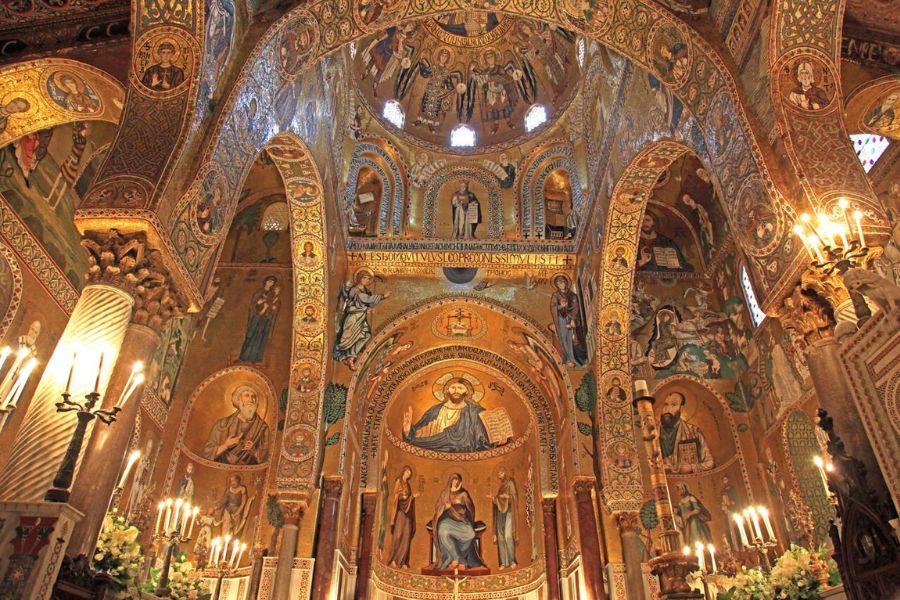
These distinct cultural elements don’t clash; they blend. Norman arches hold up a wooden ceiling covered in Arabic-style honeycomb carvings, while Byzantine mosaics sparkle overhead. I lost track of time, staring upward, always spotting something new. If you ever find yourself in Palermo, put this golden chapel at the very top of your list.
Cappella Palatina: Palermo’s Golden Jewel
Palermo’s most dazzling treasure? That’s the Cappella Palatina, hands down. Gold mosaics catch the sunlight and three cultures merge into something close to perfect. Walking inside feels like wandering into a medieval fantasy.
Historical Context and Founding
That first glimpse? I’ll never forget it. Built around 1140, King Roger II commissioned the Cappella Palatina, following in his father’s footsteps. This wasn’t just another chapel—it was the Norman kings’ personal royal sanctuary, meant to project their power and divine right.
Norman rulers in Sicily didn’t just conquer—they embraced the island’s cultural mix. Roger II wanted his chapel to mirror Sicily’s role as a crossroads between Europe, Africa, and the Middle East.
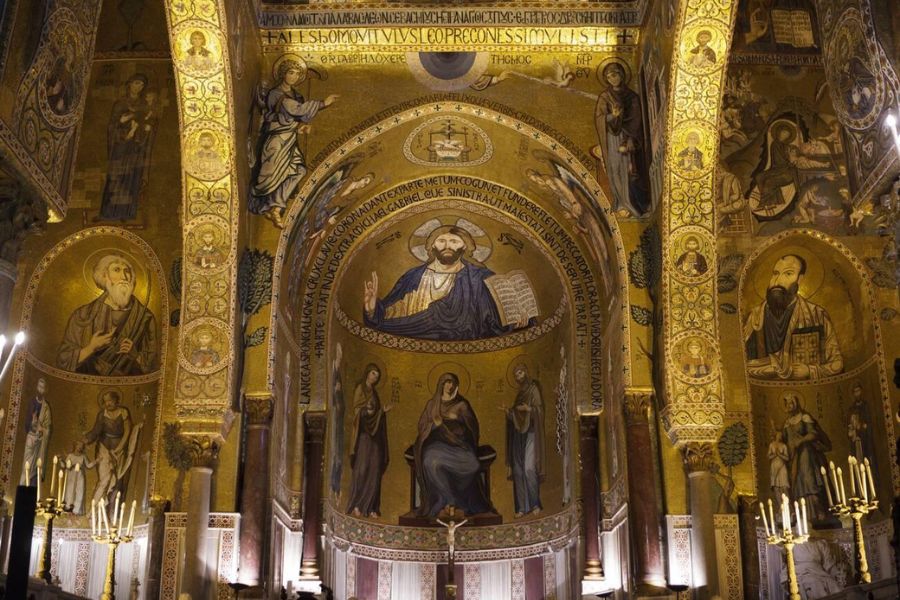
A local guide pointed out how the chapel functioned as the spiritual heart of the royal palace, where monarchs prayed and celebrated major ceremonies. The timing couldn’t have been better—Sicily was booming, and Palermo rivaled Constantinople and Cairo in both wealth and culture.
Norman, Byzantine, and Arab Influences
What really sets the Cappella Palatina apart is this almost effortless blend of three civilizations. The chapel stands as a snapshot of Sicily’s multicultural moment in the 12th century.
Its basilica layout follows Norman architecture. When I looked up, the Byzantine mosaics covering nearly every inch of the upper walls stole my breath. Gold backgrounds make biblical scenes glow in a way that feels almost otherworldly.
But the Arab influences? Those might be the most fascinating. The wooden muqarnas ceiling—honeycomb vaulting you usually see in mosques—features painted scenes of daily life, animals, and geometric patterns.
Arabic inscriptions sit right beside Christian images. I noticed how Byzantine artists, Islamic craftsmen, and Norman builders worked side by side, creating something truly unified.
The Unique Location Within Palermo
The Cappella Palatina sits inside the Palazzo dei Normanni (Palace of the Normans), right in the center of Palermo. That’s not just a coincidence—it puts the chapel at the political core of Sicily.
Walking through the palace courtyard, I could feel anticipation building. The chapel sits on the first floor of the palace’s west wing, both easy to reach and tucked away for protection.
Palermo itself is the perfect backdrop for this cultural blend. The city was once an Arab capital, and you can still sense that in the winding streets. After my visit, I wandered through markets that felt straight out of North Africa.
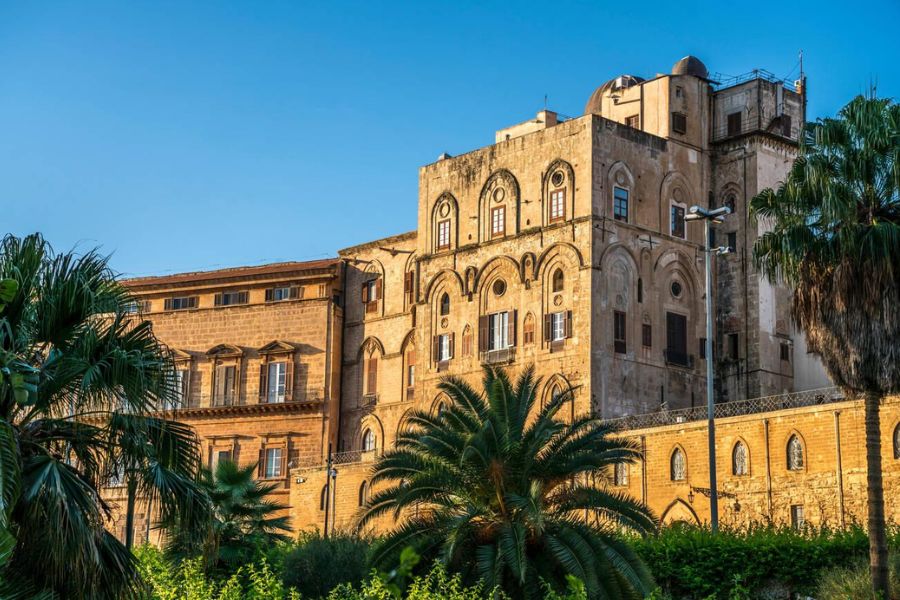
The chapel’s spot inside both the palace and Palermo itself says a lot about Sicily’s rulers. They wanted to be seen at the intersection of European Christianity and Mediterranean cultures. Today, the chapel still stands as one of Sicily’s most significant historic sites—and a must-see for anyone curious about the island’s tangled identity.
Stunning Mosaics and Artistic Legacy
The Cappella Palatina is like a time capsule of artistic traditions, each one reflecting Sicily’s unique cultural blend in the 12th century. Walking through, it feels like discovering a treasure chest crafted by Byzantine, Islamic, and Norman hands all working together.
Dazzling Byzantine Gold Mosaics
As soon as I entered, the golden light of the Byzantine mosaics washed over me. These mosaics, made between 1140 and 1170, tell biblical stories with a level of detail and color that’s honestly hard to believe.
The central dome shows Christ Pantocrator (Christ Almighty). His calm face looks down at every visitor, and it really does feel like he’s watching you. Angels and saints, all in vibrant hues, surround him.
I couldn’t help but notice how the mosaics change with the daylight. In the morning, sunlight makes these ancient figures almost leap off the walls.
The scenes unfold in order, from Genesis to the New Testament. Craftsmen used tiny glass tesserae—some smaller than a fingernail—and set them at different angles to catch the light just right.
Arab Muqarnas Ceilings and Decorative Details
Looking up at the nave’s wooden ceiling, I found another marvel: the muqarnas, or honeycomb vaulting, crafted by Arab artisans. This ceiling, with its painted panels, showcases Islamic artistic traditions at their peak.
Each panel tells a little story—musicians, dancers, hunters, and even mythological beasts. It’s like a medieval snapshot of court life.
Arabic inscriptions and geometric designs appear everywhere, creating mesmerizing patterns. The Islamic influence even stretches to the marble floors, with their star shapes and interlaced designs.
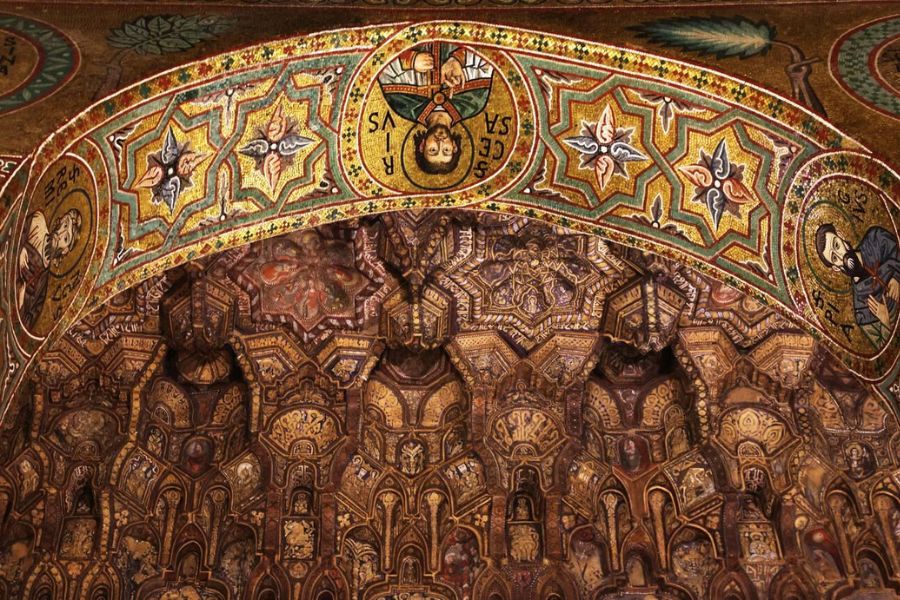
What’s wild is how well these decorations have survived. The colors are still vivid after almost 900 years, thanks to the natural pigments the Arab craftsmen used.
Norman Architectural Elements
The chapel’s bones are all Norman. I spotted the pointed arches and huge columns—classic Norman features that hold everything together.
The layout follows a basilica plan, with three aisles divided by granite columns topped with ornate capitals. These columns not only support the building but also add a steady rhythm to the space.
The choir area, with its raised presbytery and royal throne, screams Norman influence. From this spot, King Roger II could oversee ceremonies and be seen by everyone.
It’s amazing how these Norman elements mesh with Byzantine and Islamic details. The Normans’ engineering skill provided the perfect foundation for a tapestry of artistic styles.
Intertwining Civilizations: Stories Etched in Stone
The Cappella Palatina is living proof that Byzantine, Norman, and Islamic traditions can come together to make something extraordinary.
Religious Syncretism and Symbolism
Every time I walk through the chapel, I’m struck by how easily different religious traditions coexist. The Byzantine Christ Pantocrator dominates the main apse, his gaze following you wherever you move.
Islamic motifs don’t clash—they sit comfortably next to Christian images. The muqarnas ceiling, usually found in mosques, floats above Christian saints and biblical scenes. Roger II clearly encouraged religious tolerance.
I also spotted subtle nods to ancient Roman traditions. They’re not as obvious as the Byzantine mosaics or geometric Islamic patterns, but you’ll see them in the columns and their fancy capitals.
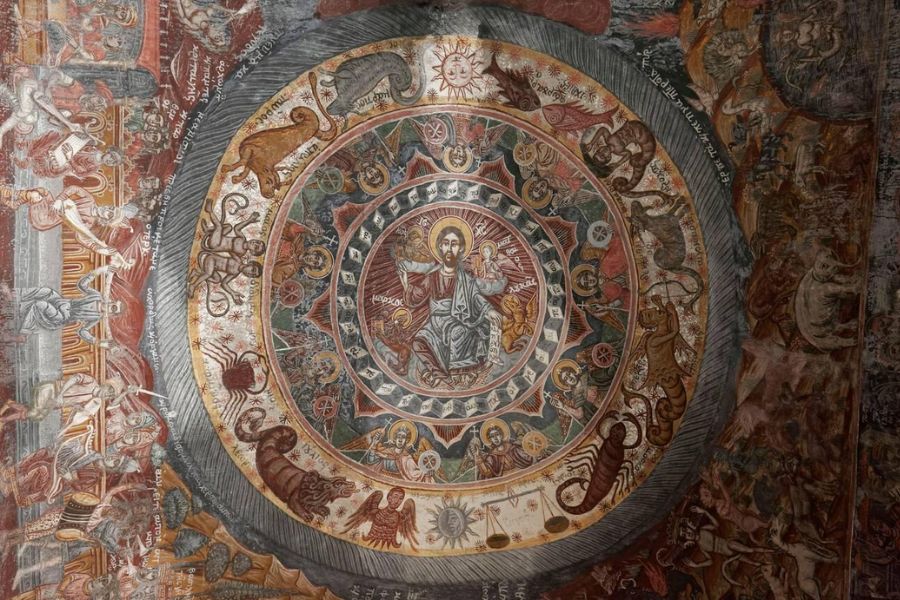
The chapel’s decorations speak a visual language all three cultures could understand, even if each group saw the symbols through a different lens.
Artisan Craftsmanship and Cross-Cultural Collaboration
Artisans from across the Mediterranean joined forces here. Byzantine mosaic masters, Islamic woodcarvers, Norman sculptors—they all worked together in a medieval super-team.
Byzantine craftsmen from Constantinople laid over 2 million glass tesserae for those shimmering mosaics. Meanwhile, Islamic artisans from North Africa built the intricate wooden ceiling with its honeycomb vaults.
Stone carvers channeled Roman influences but with a Norman twist, especially in the capitals and decorative flourishes.
This collaboration went beyond art—it was a political statement. Roger II wanted to show he could command the talents of the entire known world.
Legends of Palermo’s Royal Chapel
Local guides love to tell stories about King Roger II personally overseeing the placement of certain mosaics, making sure the chapel matched his vision for a united Sicily.
One legend claims a Muslim craftsman hid Arabic prayers in the ceiling’s patterns. I’ve stared up for ages, hoping to spot these secret messages.
There’s another tale that says, on certain days, the mosaic of Christ actually seems to move and breathe. Maybe it’s just the way the light shifts, but I’ve seen the atmosphere change with the sun.
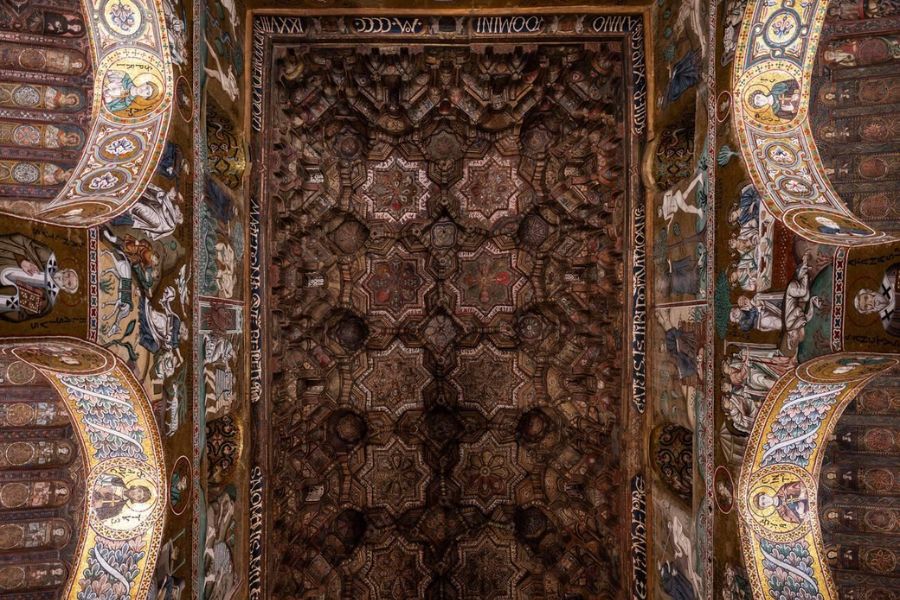
And then there’s the rumor about a secret passage from the chapel to Palermo’s harbor, supposedly for the king’s escape. No one’s found it, but it’s fun to imagine.
Cappella Palatina Among Sicily’s Treasured Sites
Sicily is packed with historical gems that showcase its layered heritage. The Cappella Palatina stands out, but it’s not alone—other sites reveal just how much this island sits at the world’s crossroads.
Cathedral of Monreale and Monreale Cathedral
Just outside Palermo, I found the Cathedral of Monreale to be absolutely breathtaking. Like the Cappella Palatina, it’s covered in glorious Byzantine mosaics.
William II built this cathedral in the 12th century, making it a prime example of Norman architecture. The massive Christ Pantocrator mosaic in the apse is impossible to miss.
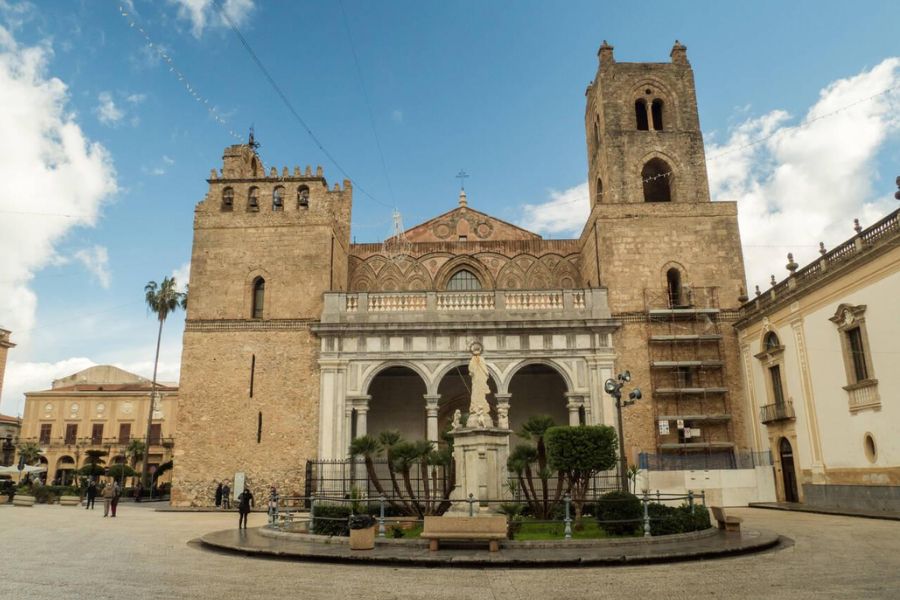
Monreale feels different, though. The Cappella Palatina is intimate and jewel-like, while Monreale Cathedral overwhelms with its size. The cloister, with its 228 carved columns, is also unforgettable—each one has its own blend of Islamic and Norman motifs.
Valley of the Temples and Agrigento
The Valley of the Temples in Agrigento offers something totally different but equally mind-blowing. Wandering among these ancient Greek temples, I felt like I’d stepped straight into Sicily’s Greek past.
This UNESCO site has some of the best-preserved Greek temples outside of Greece. The Temple of Concordia is almost untouched after 2,500 years—it rivals anything in Athens.
These temples show off Sicily’s earlier, Hellenic heritage. At sunset, the golden columns light up and the whole place feels enchanted.
Agrigento’s archaeological museum is worth a stop too. It’s packed with artifacts that bring the ancient city’s story to life.
Baroque Wonders: Noto and Trapani
After soaking up Norman and Greek wonders, I headed southeast to Noto. The city, rebuilt in Baroque style after the 1693 earthquake, is a visual feast.
Noto’s honey-colored limestone and over-the-top facades create a theatrical vibe you won’t find anywhere else. If the Cappella Palatina dazzles with medieval gold, Noto impresses with Baroque drama.
On Sicily’s west side, Trapani offers another twist with its Baroque buildings and a dash of North African flair. The city’s history as a trading port is written into its architecture.
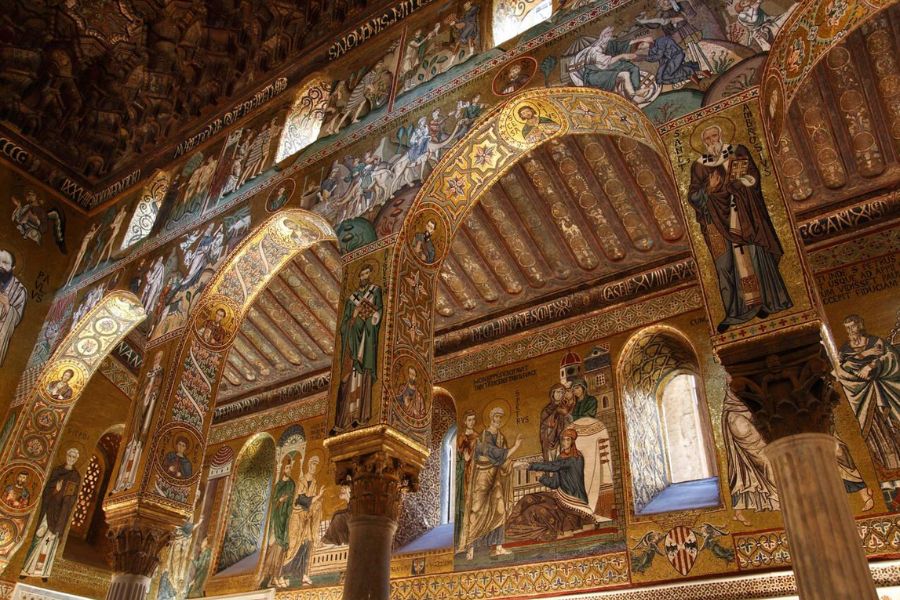
Trapani’s churches and palaces feature ornate stuccowork and marble inlays—definitely Baroque, but with a local flavor that sets them apart from Noto’s more polished style.
Travel Inspiration and Practical Tips
Palermo rewards anyone willing to wander and explore its different neighborhoods. The city’s history comes alive when you walk its streets, stumble upon hidden architectural gems, and get a sense of its revolutionary spirit.
Planning Your Walking Tour of Palermo
Honestly, I think you should start exploring Palermo early in the morning, when the city feels most real. Kick things off at the Quattro Canti (Four Corners)—it’s a great spot to get your bearings before you dive into the day.
From there, you can stroll over to the Royal Palace. The Cappella Palatina inside is just jaw-dropping, with golden mosaics that catch the morning light.
Crowds usually start to build by midday, especially during the summer. If you get there before 10am, you’ll have a bit more breathing room to soak it all in without bumping elbows with a bunch of tour groups.
When lunchtime rolls around, wander into the Ballarò market. Food stalls there serve up some of the best Sicilian street food you’ll find—grab a panelle (those crispy chickpea fritters) or an arancini if you want something heartier.
Oh, and don’t forget comfortable shoes. Palermo’s old streets can get pretty uneven, and you’ll probably rack up five or six miles just wandering around.
Experiencing Art Nouveau and Historic Districts
Palermo’s Liberty style (Italian Art Nouveau) buildings really stand out against all the medieval and Baroque stuff. I remember walking past Teatro Massimo—Italy’s biggest opera house—and just stopping to stare at those massive columns and all the little details.
If you’re hunting for the best Art Nouveau, check out Via Libertà and Via Roma. Villa Igiea, designed by Ernesto Basile back in 1900, absolutely nails those floral motifs and swooping lines that define the style.
The Kalsa district, once Palermo’s Arab quarter, twists and turns with narrow streets and tucked-away courtyards. I stumbled onto the Church of Santa Maria dello Spasimo there—a Gothic church with no roof that hosts cultural events now. Kind of magical, honestly.
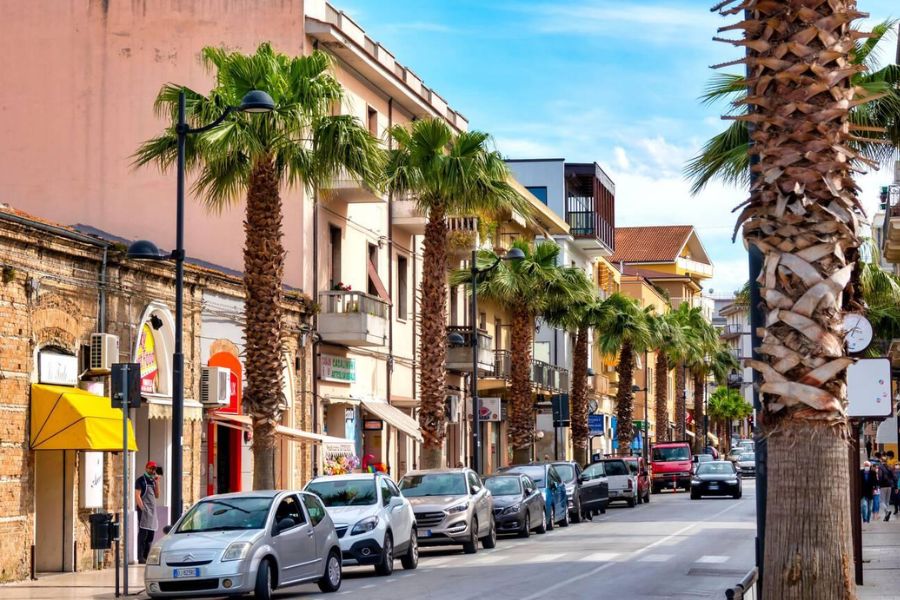
And then there’s La Vucciria. This place used to be the city’s busiest market. These days, it really wakes up at night, when local bars and restaurants fill the old square with noise, laughter, and that unmistakable Sicilian vibe.
Connecting with Garibaldi’s Palermo
When I follow Garibaldi’s footsteps through Palermo, I feel a real connection to Sicily’s revolutionary spirit. The Porta Nuova—yeah, that’s where Garibaldi marched in with his “Expedition of the Thousand” back in 1860—still marks the start of my favorite historical walk.
Piazza Pretoria, which locals call the “Square of Shame” because of its nude statues, saw some intense moments during Garibaldi’s campaign. Right nearby, you’ll find Palazzo Steri. It’s a beautiful building, but honestly, it gives me chills knowing it once housed the Inquisition.
I always sense Garibaldi’s presence most at Palazzo delle Aquile, the City Hall. Revolutionary proclamations happened right there. There’s just a small plaque outside, and to me, it barely hints at how important this spot actually is.
If you’re curious about the revolutionary’s legacy, the Garibaldi Theater on Via Castrofilippo is worth a visit. Their guided tours dig into his impact on Sicilian independence and, honestly, they help make sense of modern Sicily’s tangled identity and politics.

